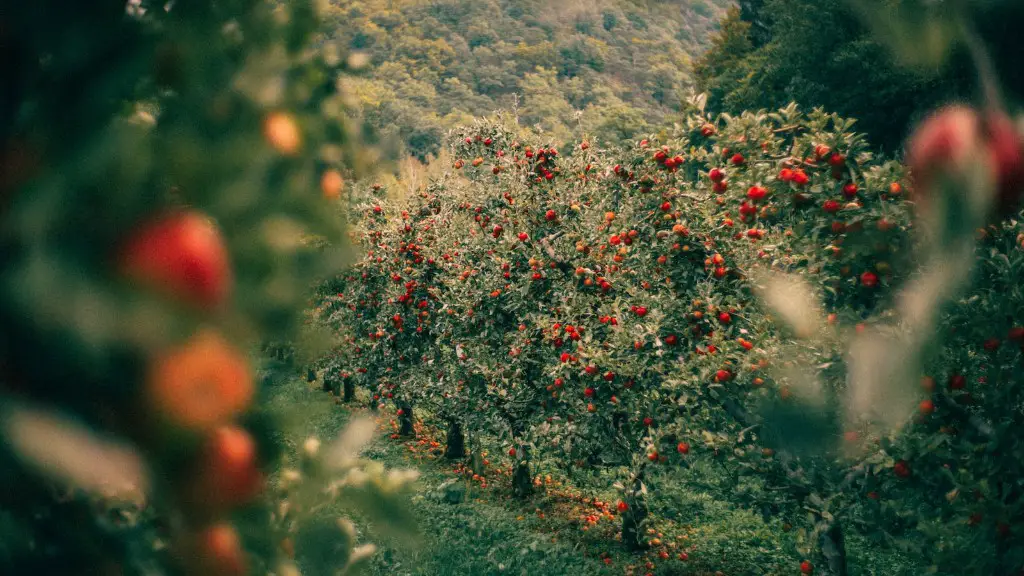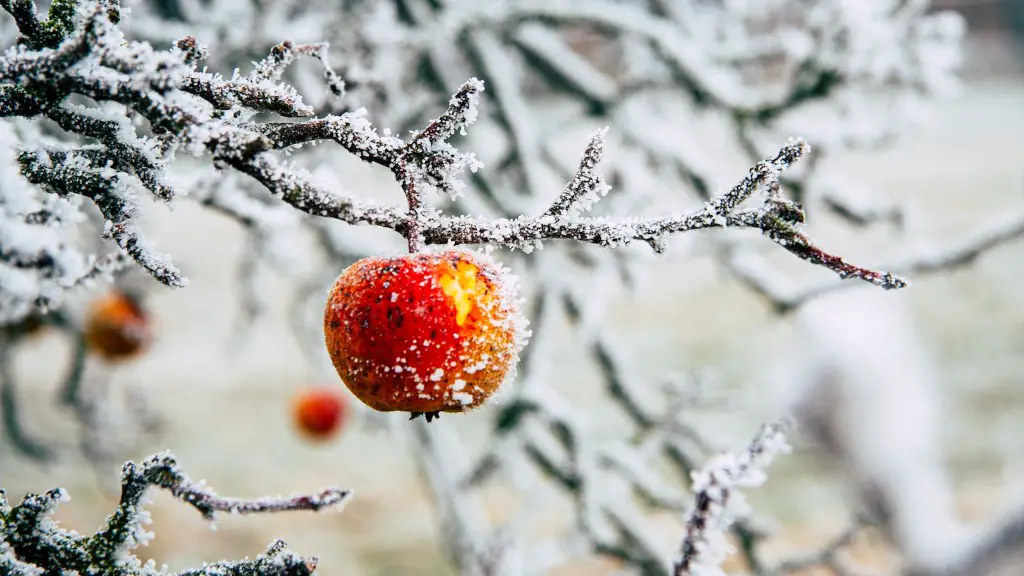If you’re a keen gardener who loves to grow your own food, you’ll know the frustration of waiting all year for your avocado tree to fruit, only to end up disappointed. Even after providing your tree with plenty of attention and care, you’re left feeling disheartened with no harvest of delicious, creamy avocados.
If you’re in this situation, don’t despair. There are a few reasons why your avocado tree may be behaving the way it is, and with a bit of investigation and effort, you can work out why and fix it.
Some people are deterred from growing avocado trees because of their repuation for being ‘fussy’. However, as long as you understand and cater to the trees’ needs, you won’t have to put up with any finicky behaviour.
The most common culprit behind an avocado tree not fruiting is incorrect climate. Avocados need a lot of sunshine and warmth to bear fruit, and if the temperature falls below 10⁰C, this can disrupt flowering and fruit production.
Under- or over-watering are also potential explanations as to why an avocado tree won’t fruit. The intensity of watering an avocado tree needs depends on the type of soil it’s planted in, with light or sandy soil requiring frequent water compared to heavier soils, which may require less water.
Another popular theory is that in order to encourage fruiting, an avocado tree should be planted in a container so it can be moved around, ideally to different microclimates. This means that it can take advantage of more favourable temperatures as the seasons change.
But even though understanding the typical causes of an avocado tree not fruiting is one thing, being able to identify the problem on your own tree is another. Most issues can be identified through observation. For example, if the tree’s leaves are yellowing and wilting, this could be from too much or too little water.
If your avocado tree is free from physical symptoms, but still won’t fruit, it might be time to call an expert. If a tree is particularly young, it’s possible it still hasn’t reached its fruiting cycle. Professional advice may help you to understand your tree’s maturity level and make plans accordingly.
Soil Quality Issues
Healthy soil is key to a healthy avocado tree. Areas of soil without much organic material may not contain the correct balance of beneficial bacteria or be lacking the nutrients the tree needs. Ensuring nutrient-rich soil will not only help encourage fruiting, but also promote general health of the plant.
For low-quality soil, many gardeners turn to soil improvers or fertilizers. In a garden, compost and manure can be used to enrich the soil and create a more balanced environment for avocado trees to thrive in. In containers, slow-release fertilizers are a good option. It’s important to ensure the fertilizers used are labelled for use on avocados, as some are more suitable for other plants than for avocados.
Generally, avocado trees prefer soil with a pH between 6.5 and 7.5. If the pH is too high or low, it may not be able to absorb the nutrients it needs, causing deficiencies and preventing fruiting. Test kits are available, but if in doubt, soil analyses can be conducted by experts.
Improper Pruning
Pruning, one of the most important aspects of avocado tree care, can also be a potential issue. If the tree isn’t pruned correctly or too often, it can lead to a lack of blooms and fruit, or even impact its growth.
Shortly after planting, the avocado tree should be pruned so that only two branches remain on the stem. This should be done every second year from then onwards to promote strong branching and bushy growth.
It’s best to prune during spring or summer to ensure the tree has enough time to recover before the colder months, when it’s more vulnerable to diseases and pests.
When pruning an avocado tree, you should always remove branches that are too close together or cross over each other. Twigs with no sign of blooming should also be taken out, as they aren’t helping the tree produce fruit and will only sap energy from it.
Lack of Pollination
Pollinators, such as bees, play a key role in ensuring fertilization of avocado flowers and thus, fruit growth. For a successful bloom, the tree should have both female and male flowers, which require pollination to mature into fruit.
If your avocado tree isn’t located near structures, like buildings or roads, that draw in pollinators, you may want to consider starting a bee-friendly garden or setting up a bee-bathing dish nearby. This will bring in plenty of pollinators to help get your tree going.
Even if your garden is bee-friendly and inviting, avocado trees can still be picky. If the species of bee it draws in isn’t the right type to pollinate it, the tree will not bear fruit. You can purchase or borrow a bee trap to survey the types of bees buzzing around your garden and use the data to identify the most effective pollinator.
Pest Control
Pests, such as aphids, can disrupt the avocado tree’s flowering process, resulting in a lack of blossoms and fruit. Keeping a keen eye on the tree’s foliage and petals is essential for recognising these issues early and taking steps to remediate them.
Natural bug repellents, like neem oil, may be used in small doses to avoid pests from ruining the flowers and preventing the tree from budding. However, as chemical repellents can be hazardous for pollinators, it’s essential to ensure a wide variety of friendly bugs have access to the tree.
If you’ve tried the tips above but your tree still won’t fruit, it may be that it’s the wrong type of avocado tree. Certain varieties are better suited to cooler climates, while others are designed to thrive in warmth. Knowing the appropriate type of avocado tree for your climate will mean fruiting success in no time.
Tree Age
Some less common reasons an avocado tree won’t fruit may be its age and size, or the incorrect gender of the tree. To bear fruit, avocado trees should be at least four years old, and to thrive and regularly produce fruit, they should be between five and eleven years old.
Additionally, incorrect gender is a potential explanation. If you have the wrong type of avocado tree for your climate, it will be next to impossible for it to successfully produce fruit. Talking a tree specialist may help you to identify the gender of your tree and, if necessary, replace it with the more suitable variety.
Harvesting and Storage
If you’re lucky enough to have an avocado tree that fruits, you’ll want know how to reap the benefits of your hard work and make the most of your harvest. After harvesting, avocados should be left out at room temperature and if left untouched, they may take up to three weeks to ripen.
If you’re looking to store avocados, they should be placed in the refrigerator. This will slow down the ripening process and allow them to remain fresh for up to three months. Avocados should be stored with the skin still on, as this can help to slow the ripening process.
Pruning Time
Finally, the season for pruning has a great impact on the success of fruiting. While pruning during spring or summer is the ideal time to ensure the tree has enough time to recover before colder temperatures, pruning during the winter may not leave the tree enough time to recover adequately before the cold months.
It’s generally recommended that trees that produce fruits in spring should be pruned during winter, while trees that have a fall harvest are best pruned during the end of spring. Being aware of your variety’s fruiting cycle and when’s the right time to prune can make all the difference.
Harvest Schedule
Being aware of the harvest schedule of your avocado tree can save you a lot of frustration. Staying informed on when you can expect your tree’s blooming season will ensure you’re in the best position to maximise your produce.
In areas with cooler climates, an avocado tree will usually bear fruit once a year. However, in warmer climates, it’s likely that your tree will fruit twice a year, usually around summer and late winter.
To maximise chances of a successful harvest you should also be aware of any sudden changes in temperature that may threaten your avocado tree’s blossoms or resulting fruit. Staying informed on the forecast and taking measures to protect your tree ahead of cold spells can help to ensure you won’t miss out on a harvest.
Frost Damage
Frost can devastate an avocado tree, particularly those in cooler climates, so it’s essential to take steps to protect it as temperatures drop. If a frost is approaching, cover the tree with frost-resistant cloth to provide some insulation.
It’s also a good idea to prune the top of the tree so that there’s less foliage to be damaged by the frost. This should be done carefully to ensure the structure of the tree isn’t ruined. If you don’t prune and the tree is damaged by frost, it may be necessary to completely replace it.
Fashioning a Comfort Zone
If you want to give your avocado tree the best chance of fruiting, it’s important to provide it with a consistent and comfortable environment. For example, if you live in an area with a cooler climate, make sure the tree is planted in a spot away from any cold draughts or frost pockets.
It’s also important to mulch around the base of the tree to keep in moisture and to protect it from weeds. Additionally, give the tree a generous amount of sunlight and make sure you water it consistently, adjusting the frequency of watering depending on the type of soil it’s planted in.
Fertilization and Nutrients
Avocado trees need to have all the essential nutrients to have a successful bloom and fruit cycle. Essential nutrients for healthy avocados include potassium, phosphorus, and any micronutrients, such as boron, that may be lacking in the soil.
These nutrients can be applied through water-soluble fertilizers and should be given during the autumn, winter, and spring when the tree is actively growing. However, it’s important to fertilize very sparingly as too much fertilizer can damage or burn the tree.
The quality of soil is also a key factor in successful fertilizer application, so you should always conduct soil analysis before applying any fertilizers. This will help to avoid any nutrient imbalances in the soil that may affect the health of your tree and its resulting fruit.




